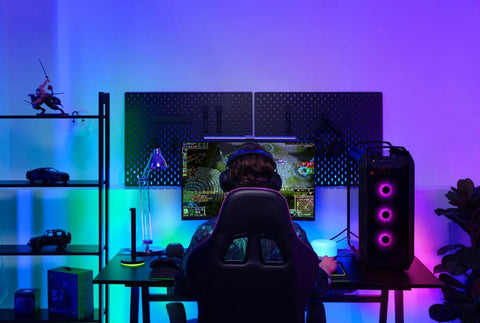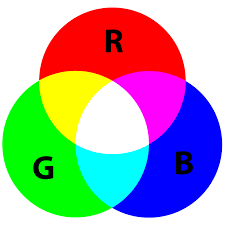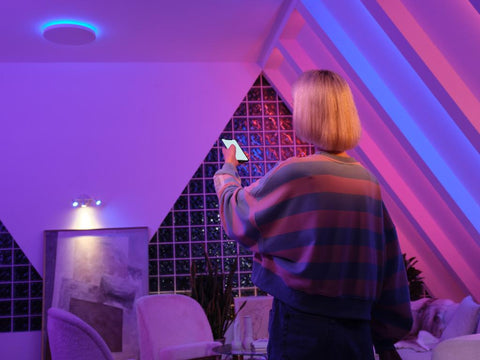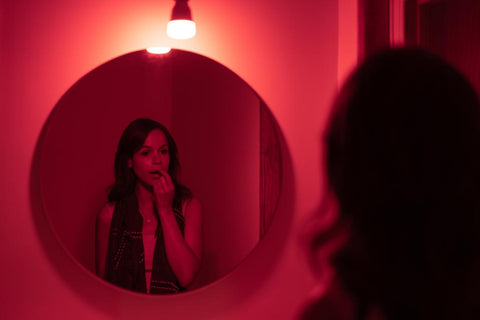RGB lighting, which stands for red, green and blue, has changed the way we illuminate spaces, offering an endless spectrum of colors by mixing these three primary hues.
In this article, we'll explore what RGB lights are and provide step-by-step guidance on how to effectively install and select them to enhance the functionality and aesthetics of your space.
What Is RGB Light?

RGB lighting is lighting that uses red, green, and blue light to produce a variety of colors. These colors are created by varying the intensity of each primary color, resulting in more than 16 million possible combinations. RGB lighting is used in various industries because of the customizable lighting effects it can produce.
What Are RGB Colors? What Does RGB Stand for?
RGB color refers to a color model that uses varying intensities of red, green, and blue light to create various hues. The abbreviation RGB stands for red, green, blue and represents the primary colors used in this color model.
Advantages of RGB Lighting
RGB lighting has numerous advantages that make it a popular choice for a variety of applications, let’s take a look at some of its potential benefits:
Versatility: One of the main advantages of RGB lighting is its versatility. Capable of producing over 16 million color combinations, RGB lighting can provide custom and customized lighting to suit their preferences and needs.
Aesthetic enhancement: Another significant advantage of RGB lighting is its ability to enhance aesthetics. By utilizing vibrant and dynamic colors, it can transform any space into a visually captivating environment. RGB lighting can add an element of visual appeal that traditional lighting cannot match.
Customization: Users of home automation systems equipped with RGB lighting can create a personalized environment by adjusting the color scheme to suit their desired mood.
Energy Efficiency: RGB Lighting The LED technology used in RGB lights consumes less power than traditional incandescent bulbs while offering a variety of color options. This not only reduces energy consumption but also helps save costs in the long run.
Personalization: The ability to synchronize the colors of RGB lighting with music or create a dynamic light show adds a personal touch to any setting, making it ideal for those looking for a unique and customized lighting experience.
How Do They Produce Light?
It’s curious how RGB lighting works, producing a wide range of colors. Understanding how RGB lighting creates illumination requires a deep dive into the technology behind it and the complex color mixing process.
LED Technology: The core of RGB lighting lies in LED (Light Emitting Diode) technology. An LED is a semiconductor device that emits light when electricity passes through it. With RGB LEDs, each diode contains three separate chips (red, green, and blue) responsible for emitting their respective primary colors.
Color mixing: The process of RGB lighting producing various colors is achieved through color mixing. By controlling the intensity of each primary color (red, green, and blue), a variety of hues can be created. When all three colors are emitted at full intensity, they combine to produce white light. Instead, different colors are formed through additive color mixing by adjusting the intensity levels.
Control Mechanism: In order to achieve precise control over the emitted color, RGB lighting systems employ complex control mechanisms. These mechanisms allow users to adjust the intensity of each primary color independently, allowing them to create custom color combinations to their liking.
Light Output: The light output of RGB lighting is the result of mixing different intensities of red, green, and blue light. This mixing occurs seamlessly within individual LED diodes or light strips, resulting in an even distribution of colored light within the lighting area.
Types of RGB Lights

When it comes to RGB lighting, there are many types of lights to choose from, each offering unique features and applications. Understanding the different types of RGB lights allows us to choose the most suitable lighting more quickly.
1. RGB LED Light Strip
RGB LED light strips are a popular choice for adding vibrant and customizable lighting to a variety of settings. These flexible light strips are made up of individual LEDs that can independently emit red, green, and blue light. They are often used for accent lighting, under-cabinet lighting, and to create dynamic visual effects in entertainment spaces.
2. RGB Floodlight
RGB floodlights are powerful outdoor lighting fixtures that feature red, green, and blue LEDs that produce a variety of colors. These lights are commonly used for architectural accents, landscape lighting, and event lighting. RGB floodlights can create attractive color displays and dynamic lighting effects, which can effectively enhance the lighting of outdoor environments. They are also energy-saving.
3. RGB Light Bulb
For indoor lighting applications, RGB bulbs provide a convenient way to introduce customizable lighting into a home or commercial space. These bulbs combine red, green and blue LEDs in a single unit, allowing users to adjust the color output to their liking.
4. Smart RGB Lighting System
Smart RGB lighting systems feature advanced technology that enables remote control and programmable functionality. These systems often include smart LED light strips, bulbs or fixtures that can be synced with a mobile app or voice assistant to seamlessly integrate into a smart home environment. Users can adjust colors, create custom lighting schedules, and even sync lights with music or other smart devices.
5. DMX Controlled RGB Fixtures
In professional lighting settings such as stage productions, concerts, or architectural displays, DMX-controlled RGB fixtures enable precise control of color mixing and dynamic light shows. DMX (Digital Multiplexing) technology allows users to program complex lighting sequences by controlling individual RGB fixtures from a central console or software interface.
Where Are RGB Lights Used?

RGB lighting has a variety of applications in a variety of settings, providing dynamic and customizable lighting for different environments.
1. Residential Space
In residential settings, RGB lighting can be used to transform living spaces into vibrant and visually captivating environments. Both RGB lighting offer homeowners the flexibility to customize lighting for different activities and moods. Additionally, it can be used to accentuate architectural features such as niches, shelves or artwork, adding an element of visual interest to interior designs.
2. Entertainment Venues
Entertainment venues benefit from the use of RGB lighting, which enhances the overall sensory experience. From theaters and concert halls to gaming venues and nightclubs, RGB lighting creates immersive atmospheres by synchronizing with music or on-screen content.
The ability to produce dynamic lighting effects adds an extra dimension to entertainment spaces, engaging audiences and enhancing the overall visual appeal of the venue.
3. Commercial Organization
In commercial environments such as restaurants, bars and retail stores, RGB lighting is a powerful tool for creating the desired atmosphere and attracting customers. By utilizing customizable lighting, businesses can create an inviting atmosphere that matches their brand image and caters to specific customer preferences.
4. Outdoor Environment
Outdoor spaces benefit from the versatility of RGB lighting, especially when it comes to landscape lighting and architectural accents. Gardens, patios and outdoor spaces can be transformed with bright colors to complement the natural surroundings or create a captivating visual display.
5. Event Decoration
Events ranging from weddings and parties to corporate gatherings can enhance the atmosphere by decorating with RGB lighting. RGB lighting can create a happy atmosphere at wedding receptions and can also create a lively atmosphere at product launches.
6. Architectural Installation
RGB lights integrated into building facades, interiors or public art installations provide architects with creative freedom in lighting structures. The seamless integration of colorful lighting and architectural elements adds a layer of energy that complements the modern design concept.
By harnessing the potential of RGB lighting, individuals in the residential, commercial, and entertainment industries can gain unparalleled customization options that enhance aesthetics while providing energy-saving solutions.
How to Install RGB Lights?
Installing RGB lights allows individuals to transform their living spaces with vibrant and customizable lighting. Whether it is a residential, commercial or entertainment venue, the installation of RGB lighting requires careful planning and attention to detail to achieve the desired lighting effect.
1. Power Supply Precautions
When installing RGB lights, ensuring adequate power will help you understand the best performance of the RGB lights. LED-based RGB lighting typically operates at low voltage and requires a compatible power supply, such as an LED driver or transformer. Calculating power consumption and selecting an appropriate power supply are important steps during installation to prevent voltage drops or circuit overloading.
2. Wiring and Connections
To properly install an smart LED strip light, be sure to wire and connect it correctly. For hardwired installations, understanding basic electrical principles will make it faster to safely connect an LED strip or fixture to a power source. In the case of a smart RGB lighting system, a wireless connection via Wi-Fi or Bluetooth protocols may be required for seamless integration into a home automation setup.
3. Control System Integration
By integrating control systems into RGB lighting fixtures, users can easily manage color schemes, brightness levels and dynamic effects. This may involve connecting smart RGB fixtures to a dedicated mobile app or central controller to enable remote access and programming capabilities.
The integration of control systems provides a convenient way to tailor lighting to specific preferences, thereby enhancing the overall user experience.
4. Testing and Calibration
Once the physical installation of the RGB lights is complete, testing and calibration are important steps to ensure proper functionality. This includes verifying electrical connections, evaluating color accuracy, and fine-tuning brightness levels to achieve consistent lighting on all installed fixtures.
5. Maintenance Guide
Establishing maintenance guidelines for your RGB lighting fixtures can extend their lifespan and maintain optimal performance. Regularly cleaning fixtures, checking wiring for wear or damage, and updating the firmware of your smart RGB system are important parts of routine maintenance.
6. Safety Instructions
Prioritizing safety measures throughout the installation process ensures a safe environment for installers and occupants. Complying with electrical codes and regulations when handling wiring connections can effectively prevent hazards such as short circuits or electrical fires.
Potential risks associated with installing RGB lights can be further reduced by using appropriate personal protective equipment (PPE) when working with electrical components.
How to Choose the Right RGB Lights

When choosing the right RGB lighting for a specific application, there are several factors to consider to ensure that the lights chosen meet the desired aesthetic and functional requirements.
Purpose and Application: Before selecting RGB lights, the purpose and intended application of the lighting must be defined. Whether it’s to create a residential ambience, accentuate an architectural feature, or create dynamic visuals in an entertainment space, understanding specific use cases can help determine the most appropriate type of RGB lighting.
Clamp Types and Form Factors: Different types of RGB lights offer unique form factors and mounting options. For example, RGB LED strips are flexible and perfect for ambient lighting, while RGB floodlights provide powerful outdoor lighting. Consider the form factor that best suits the intended application, ensuring that the luminaires integrate seamlessly into their respective environments.
Color range and intensity: RGB lights have the color range and intensity capabilities to achieve the desired lighting effect. Evaluating whether broad spectrum or high-intensity lighting is required can help narrow down choices based on specific color rendering needs.
Compatibility with control systems: For users seeking advanced control of RGB lighting, compatibility with control systems such as mobile apps, voice assistants, or centralized controllers is a key consideration.
Energy Efficiency and Longevity: Choosing energy-efficient RGB lights not only reduces long-term operating costs but also contributes to sustainability. LED-based RGB fixtures are known for their energy efficiency and long lifespan, making them an environmentally friendly choice for dynamic lighting solutions.
Installation Flexibility: When choosing RGB lights, ease of installation and wiring requirements must be considered. Some fixtures may require professional installation due to complex wiring, while others offer user-friendly installation options suitable for DIY projects.
Brand reputation and warranty: Choose a reputable brand, such as Yeelight, as they can bring more service options and better products to users.
By considering these factors when selecting RGB lights, individuals can make informed decisions that match their specific lighting requirements while ensuring optimal performance and visual impact.
Summarize
RGB lighting provides a versatile and vibrant solution for functional and aesthetic lighting needs, allowing users to customize their environment with a variety of colors.
When choosing RGB lighting, you should consider factors such as the brightness, color range, and control system of RGB lighting to ensure that the product meets your specific requirements.
FAQ
1. What are the maintenance requirements for RGB lighting fixtures?
RGB lighting fixtures require regular maintenance to ensure optimal performance and longevity. We should regularly clean fixtures, check wiring connections for wear or damage, update smart RGB system firmware (if applicable), and pay attention to environmental factors such as humidity or temperature fluctuations, among other tasks.
2. What are the benefits of using DMX controlled RGB fixtures in a professional environment?
DMX-controlled RGB fixtures enable precise control of color mixing and dynamic light shows in professional environments such as stage productions, concerts or architectural displays. The ability to orchestrate complex lighting sequences by controlling individual luminaires from a central console or software interface provides additional functionality to create immersive visual experiences in different entertainment and architectural environments.
When choosing between different types of RGB lights based on form factor, evaluate how each type meets application requirements. For example:
- RGB LED strips are very flexible and perfect for ambient lighting.
- RGB floodlights provide powerful outdoor lighting.
- RGB bulbs provide a convenient indoor lighting option.
- Smart RGB lighting systems integrate advanced technology for seamless control.
- DMX controlled RGB fixtures for professional setups that require precise color mixing.
By considering these form factors in relation to the intended application, individuals can make an informed decision when selecting the appropriate type of RGB light.
Related reading: How long do smart light bulbs last










